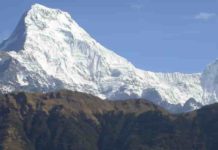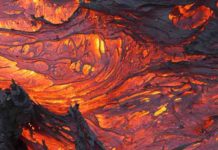
Mountains are among the most biodiverse places on Earth, but scientists have struggled to fully understand why they are so important in creating high species richness. An international research team, including four scientists from the University of Amsterdam, has now shed new light on answering this long-standing question.
The team found that mountain building, through a process of uplift and erosion, continuously reshapes the landscape and is responsible for creating habitat heterogeneity in an elevational gradient. “The complex interplay between growing mountains and climate generates plenty of opportunities for the creation of new species,” says Carina Hoorn, senior author of the paper. “Although climate and ruggedness of the terrain were previously thought to be the principal cause for mountain biodiversity, our global synthesis now makes clear that geological history plays a paramount role in this process,” explains Hoorn.
The team reached this conclusion by applying statistical models to biological, geological and climatological datasets from across the globe. “In our models, we related the species richness of birds, mammals and amphibians to global datasets of temperature, precipitation, erosion rates, relief and soil composition,” says Daniel Kissling who conducted the statistical analyses of the paper. “I was surprised to find not only the usual correlations with climate, but a significant relation between biodiversity, erosion history, relief and number of soil types,” continues Kissling. While the study shows that this is evident globally, it also revealed that the relationship can vary depending on which mountain system is considered. “This regional variation in the importance of geological drivers was really unexpected,” says Kissling.
The study further showed that geographic position (e.g. whether a mountain intercepts atmospheric currents or not) and the duration of mountain building process (young or old) are also important processes influencing biodiversity in mountains. On shorter geological time scales, Quaternary climatic fluctuations can also promote the creation of new species in mountains. “We suggests that the waxing and waning of glaciers, which has strongly reshaped the landscape and repeatedly connected and disconnected animal and plant populations, has played an important role for the creation of new mountain species,” says Suzette Flantua who studied the effects of Quaternary climate change on mountain biodiversity in Latin America for her Ph.D. at the University of Amsterdam.
The advances in geological methods and the increasingly complete global data sets on climate, soils, erosion history, and species richness only now have made it possible to gain such comprehensive insights into the relation between mountain building and biodiversity. The scientists are optimistic that with the new methods and datasets, further insights into the complex relationship between biodiversity, climate and mountain building can be expected in the near future.
Reference:
Alexandre Antonelli et al. Geological and climatic influences on mountain biodiversity, Nature Geoscience (2018). DOI: 10.1038/s41561-018-0236-z
Note: The above post is reprinted from materials provided by University of Amsterdam.









